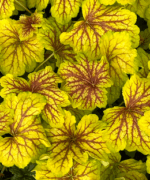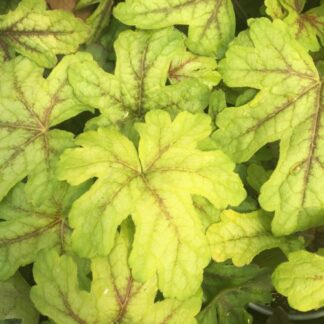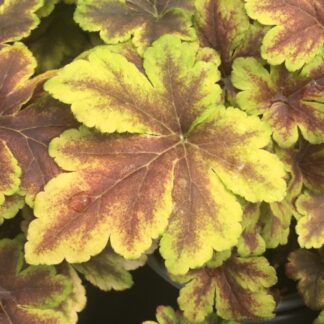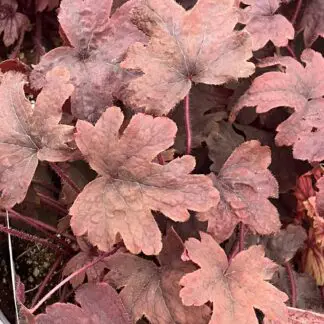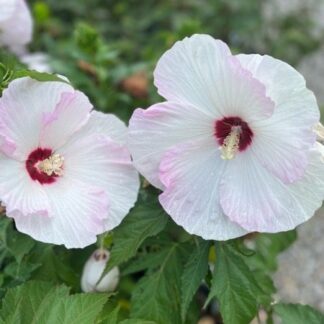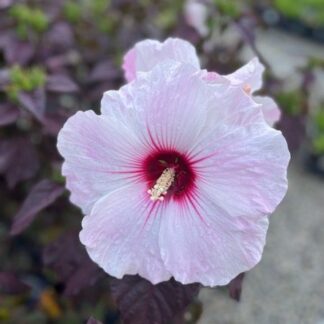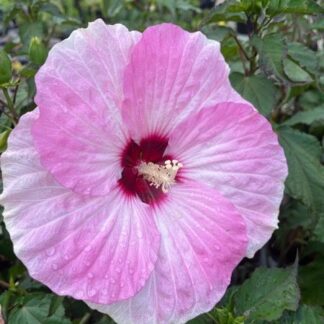Perennials
The Best Perennial Plants and Seeds for Your Garden
If you’ve ever dreamed of a garden that greets you with blooms year after year, then perennial plants might just be your new favorite thing. These are the hardworking plants that keep on giving. You plant them once, and they return again and again, often with more beauty and strength than before.
Sound like magic? It kind of is.
But most of all, perennials are a gardener’s dream come true. They save you time, energy, and money—and they offer a living, growing reward every season. Whether you’re planting your first flower bed, adding structure to your backyard oasis, or building a bountiful kitchen garden, perennials are here to help.
Let’s explore the best perennial plants and seeds to grow in your garden—and why you’ll absolutely fall in love with them.
Why Perennials Are So Wonderful
Before we dig into the best options, let’s talk about what makes perennials so special.
Perennial plants are those that live for more than two years. Unlike annuals, which die after a single season, perennials go dormant in winter and return in the spring. This means:
- No need to replant each year.
- They often grow larger and stronger over time.
- They’re budget-friendly in the long run.
- They help support pollinators and healthy ecosystems.
- They bring a natural rhythm to your garden.
But best of all? Once your perennials are established, many of them require very little care. Less work, more beauty. That’s a win.
Shop for Perennial Plants and Seeds
Showing 21–40 of 58 results
-

Heuchera, Delta Dawn
Price range: $6.99 through $14.99 Read more -

Heuchera, Fire Alarm
$14.00 Select options This product has multiple variants. The options may be chosen on the product page -

Heuchera, Forever Purple
Price range: $6.99 through $14.99 Select options This product has multiple variants. The options may be chosen on the product page -

Heuchera, Forever Red
Price range: $6.99 through $14.99 Select options This product has multiple variants. The options may be chosen on the product page -

Heuchera, Georgia Peach
Price range: $6.99 through $14.99 Select options This product has multiple variants. The options may be chosen on the product page -

Heuchera, Red Lightning
Price range: $6.99 through $14.99 Select options This product has multiple variants. The options may be chosen on the product page -

Heuchera, Southern Comfort
Price range: $6.99 through $14.99 Select options This product has multiple variants. The options may be chosen on the product page -

Heucherella, Alabama Sunrise
Price range: $6.99 through $14.99 Select options This product has multiple variants. The options may be chosen on the product page -

Heucherella, Brass Lantern
Price range: $6.99 through $14.99 Select options This product has multiple variants. The options may be chosen on the product page -

Heucherella, Gold Zebra
Price range: $6.99 through $14.99 Select options This product has multiple variants. The options may be chosen on the product page -

Heucherella, Solar Eclipse
Price range: $6.99 through $14.99 Select options This product has multiple variants. The options may be chosen on the product page -

Heucherella, Stoplight
Price range: $6.99 through $14.99 Select options This product has multiple variants. The options may be chosen on the product page -

Heucherella, Sweet Tea
Price range: $6.99 through $14.99 Select options This product has multiple variants. The options may be chosen on the product page -

Heucherella, Tapestry
Price range: $6.99 through $14.99 Select options This product has multiple variants. The options may be chosen on the product page -

Hibiscus, Ballet Slippers
Price range: $9.99 through $39.99 Select options This product has multiple variants. The options may be chosen on the product page -

Hibiscus, Berry Awesome
$36.00 Select options This product has multiple variants. The options may be chosen on the product page -

Hibiscus, Dark Mystery
$36.00 Select options This product has multiple variants. The options may be chosen on the product page -

Hibiscus, French Vanilla
$36.00 Select options This product has multiple variants. The options may be chosen on the product page -

Hibiscus, Perfect Storm
$36.00 Select options This product has multiple variants. The options may be chosen on the product page -

Hibiscus, Spinderella
$36.00 Select options This product has multiple variants. The options may be chosen on the product page
Things to Consider When Choosing Perennials
There are thousands of perennial plant varieties out there. So how do you pick the right ones for your garden?
Start with these questions:
1. What’s Your Garden’s Climate?
Some plants love the heat. Others prefer the chill. Know your USDA Hardiness Zone, and use it as a guide when choosing seeds or plants. A perennial in one zone might behave like an annual in another!
2. How Much Sunlight Do You Have?
Plants are pretty picky about sun. Some need full sun (6+ hours daily), while others prefer partial shade or even full shade. Know your garden’s light levels before planting.
3. What Kind of Soil Are You Working With?
Is your soil sandy, loamy, or clay-heavy? Does it drain well or stay soggy? These details help determine which perennials will thrive and which will struggle.
4. What Are Your Color and Style Goals?
Do you love soft pastels? Bold brights? A natural woodland feel? A clean, cottage-core vibe? Think about how your plants will look together—textures, heights, colors, and bloom times.
The Best Flowering Perennials for Easy Color
Let’s start with flowers. These plants will turn your garden into a living work of art, year after year.
🌼 Coneflower (Echinacea)
- Zones: 3–9
- Sun: Full sun
- Blooms: Summer to early fall
- Why we love it: Drought-tolerant, pollinator-friendly, and comes in a rainbow of colors.
🌸 Black-Eyed Susan (Rudbeckia)
- Zones: 4–9
- Sun: Full sun
- Blooms: Midsummer to fall
- Why we love it: Bright yellow flowers with dark centers that attract butterflies and bees.
🌺 Daylily (Hemerocallis)
- Zones: 3–10
- Sun: Full to part sun
- Blooms: Late spring through summer
- Why we love it: Incredibly easy to grow and comes in hundreds of varieties.
🌷 Peony (Paeonia)
- Zones: 3–8
- Sun: Full sun
- Blooms: Late spring
- Why we love it: Big, showy blooms and a heavenly fragrance.
🌿 Hosta
- Zones: 3–9
- Sun: Shade to part sun
- Blooms: Early to midsummer
- Why we love it: Grows lush, layered leaves in shady spots where few flowers will thrive.
The Best Perennials for Pollinators
If you want a garden that buzzes with life—hummingbirds, bees, butterflies—these plants are perfect.
🦋 Milkweed (Asclepias)
- Zones: 3–9
- Sun: Full sun
- Blooms: Summer
- Why we love it: Essential for monarch butterflies and easy to grow.
🐝 Bee Balm (Monarda)
- Zones: 4–9
- Sun: Full to part sun
- Blooms: Summer
- Why we love it: Fragrant, colorful, and a pollinator favorite.
🌾 Yarrow (Achillea millefolium)
- Zones: 3–9
- Sun: Full sun
- Blooms: Summer through fall
- Why we love it: Drought-tolerant and long-blooming, great for cutting.
The Best Edible Perennials: From Garden to Table
Yes, you can grow perennials that you can eat! These are perfect for creating a low-maintenance edible landscape.
🧄 Chives
- Zones: 3–10
- Sun: Full sun
- Why we love it: Mild onion flavor, edible flowers, and tough as nails.
🧅 Walking Onions (Egyptian Onions)
- Zones: 3–9
- Sun: Full sun
- Why we love it: They “walk” by planting new bulbs at the tips of their stalks.
🥬 Rhubarb
- Zones: 3–8
- Sun: Full sun
- Why we love it: Tart stalks for pies and jams, striking red stems.
🌿 Asparagus
- Zones: 3–8
- Sun: Full sun
- Why we love it: One planting lasts up to 20 years!
🌿 Herbs Like Oregano, Thyme, and Mint
- Zones: 4–9
- Sun: Full sun
- Why we love them: Aromatic, flavorful, and easy to grow. Just watch out—mint spreads fast!
The Best Perennials from Seed
Want to grow your garden from scratch? Here are a few perennial champions that grow easily from seed:
- Lupine
- Coreopsis
- Shasta Daisy
- Gaillardia (Blanket Flower)
- Penstemon
Tip: Many perennial seeds need a period of cold (called stratification) to germinate well. Some gardeners start them indoors in winter or direct sow in fall for best results.
Designing Your Garden with Perennials
Here’s where the fun really begins. Designing with perennials means thinking in layers:
- Tall Plants in the back (like delphinium or hollyhocks)
- Medium Plants in the middle (like yarrow, bee balm, or daisies)
- Short Groundcovers at the front (like creeping phlox or thyme)
Mix different bloom times so something is always in flower from spring to fall. Combine colors, shapes, and leaf textures to keep the garden interesting even when nothing is blooming.
Want butterflies? Add nectar-rich blooms. Want less weeding? Fill in space with spreading perennials that crowd out weeds.
A Few Tips to Keep Perennials Happy
- Water new plants deeply when first planted.
- Mulch to conserve moisture and block weeds.
- Divide clumps every few years to keep them vigorous and avoid overcrowding.
- Deadhead spent flowers to encourage more blooms.
- Leave seed heads on some plants for winter interest and wildlife.
And remember: most perennials don’t look like much in year one. But by year two or three, they take off.
Patience pays off in a perennial garden.
Let’s Plant Something That Lasts
Whether you want cheerful daisies, buzzing bees, or a salad you grew yourself, there’s a perennial waiting for you.
So grab your gloves, pick a few favorites, and start building the kind of garden that keeps coming back. Season after season. Year after year.
Let’s grow something beautiful—and let’s make it last. 🌱
What are your favorite perennials? Have you had success growing them from seed?
Share your stories, photos, or garden dreams—we’d love to hear from you!
Showing 21–40 of 58 results





